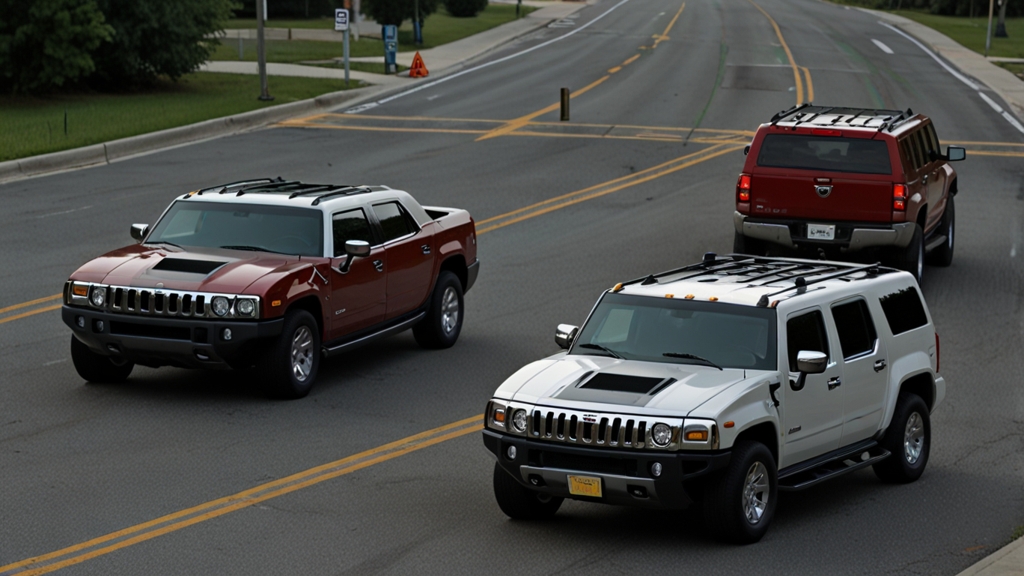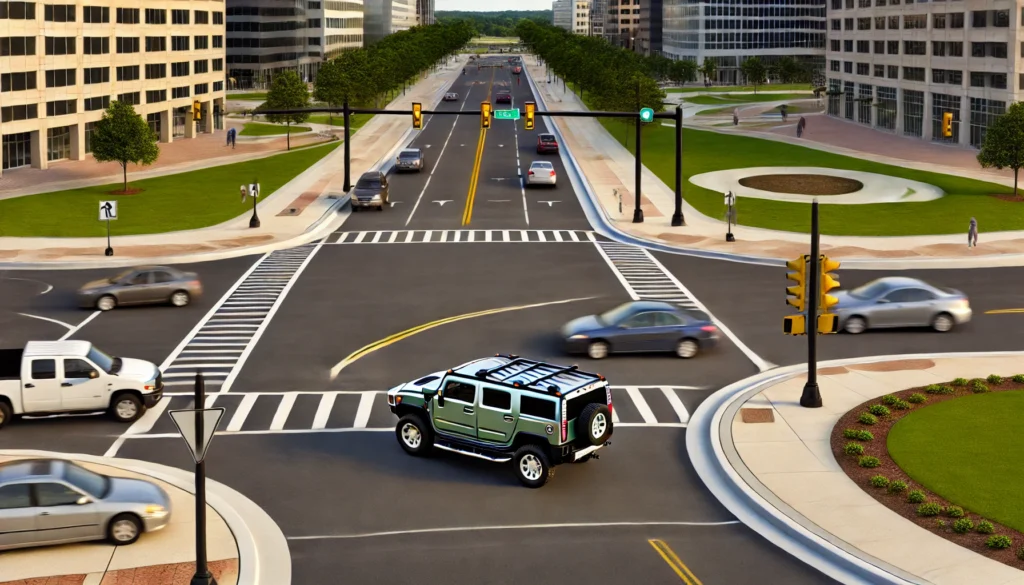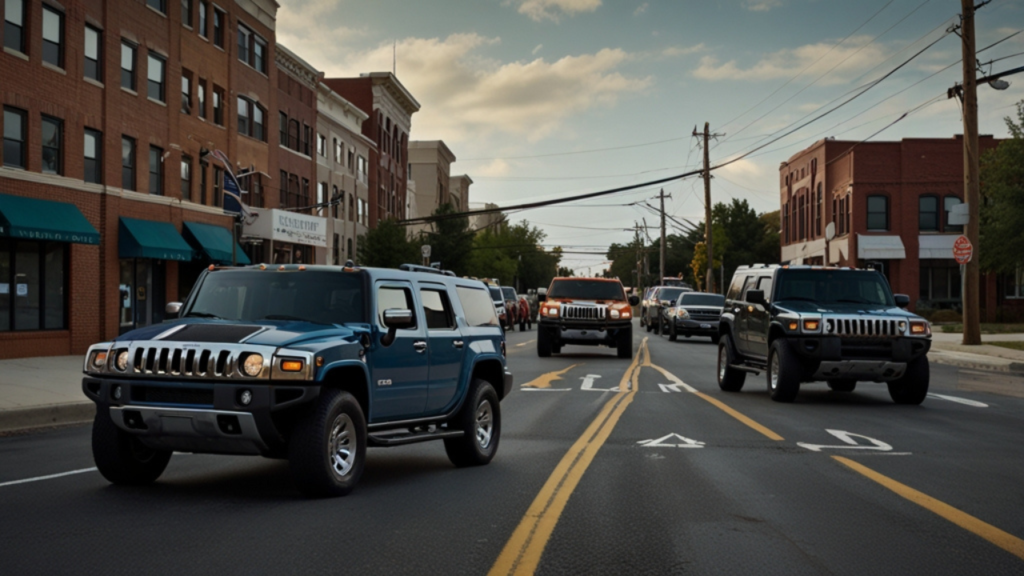Table of Contents
Introduction
Traffic congestion is a common issue in urban areas, leading to frustration among drivers and increased travel times. To tackle this problem, innovative solutions are continually being explored, one of which is the Continuous Flow Intersection (CFI). In this blog, we will delve into the details of the Virginia News Continuous Flow Intersection 2014 Hummer, examining how this intersection design aims to improve traffic flow and enhance safety. By analyzing its benefits, functionality, and real-world applications, we will demonstrate why the CFI is considered a game-changer in modern traffic management.
What is a Continuous Flow Intersection?
A Continuous Flow Intersection (CFI) is a type of intersection designed to improve traffic efficiency by allowing vehicles to flow continuously through the intersection without stopping at traffic signals. This innovative design minimizes delays and reduces the likelihood of accidents.
Key Features of Continuous Flow Intersections
- Left-Turn Lanes: One of the most significant changes in a CFI is the left-turn lane configuration. In a traditional intersection, vehicles turning left must wait for a green light, causing delays. In a CFI, left-turning vehicles are moved to a dedicated lane before reaching the intersection, allowing them to merge into oncoming traffic more efficiently.
- Signal Phasing: CFIs utilize unique traffic signal phasing to manage traffic flow. By allowing vehicles to move continuously, signal timing is optimized, resulting in shorter wait times and reduced congestion.
- Pedestrian Safety: CFIs often include pedestrian islands and crossings, enhancing safety for pedestrians and providing clear routes for them to navigate the intersection.
- Efficient Use of Space: The design of a CFI allows for a more efficient use of space compared to traditional intersections. This can lead to narrower roadways and a reduced environmental impact.
The Virginia News Continuous Flow Intersection
The Virginia News Continuous Flow Intersection 2014 Hummer serves as a prime example of how this innovative design has been implemented in Virginia. This specific intersection has gained attention due to its effectiveness in managing traffic flow and reducing congestion.
Key Benefits of the Virginia News CFI
- Improved Traffic Flow: The primary advantage of the Virginia News Continuous Flow Intersection 2014 Hummer is its ability to enhance traffic flow. Vehicles can navigate through the intersection without significant delays, leading to shorter travel times for commuters.
- Reduced Accidents: Studies have shown that CFIs can lead to a reduction in accidents, particularly those involving left-turning vehicles. By allowing vehicles to merge into oncoming traffic rather than waiting for a green signal, the likelihood of collisions is minimized.
- Environmental Benefits: With reduced idling and shorter travel times, the Virginia News Continuous Flow Intersection 2014 Hummer contributes to lower vehicle emissions. This is a crucial factor in promoting environmental sustainability and improving air quality in urban areas.
- Cost-Effective Solution: Implementing a CFI can be a cost-effective solution for managing traffic congestion. By improving flow and reducing the need for extensive road expansions or additional traffic signals, municipalities can save money in the long run.
The Design and Implementation Process
- Planning and Design: The development of the Virginia News Continuous Flow Intersection 2014 Hummer began with extensive planning and design work. Traffic engineers and urban planners collaborated to create a layout that would maximize efficiency while ensuring safety for all road users.
- Public Engagement: Engaging the public is a vital aspect of any infrastructure project. Residents and local stakeholders were given opportunities to provide input and express concerns about the intersection design, ensuring that the final implementation met community needs.
- Construction Phases: The construction of the Virginia News CFI involved multiple phases to minimize disruption to traffic. Temporary traffic controls were put in place to guide drivers safely through the area during construction.
- Monitoring and Adjustments: Once the intersection was operational, ongoing monitoring was conducted to assess its effectiveness. Traffic patterns were analyzed, and adjustments were made as necessary to optimize performance further.
Real-World Applications: The 2014 Hummer Experience
The Virginia News Continuous Flow Intersection 2014 Hummer has been utilized in various traffic scenarios, showcasing its adaptability and effectiveness. The following points highlight real-world applications and benefits observed:
- High Traffic Volume: The intersection has successfully managed high traffic volumes, particularly during peak hours. The continuous flow design has allowed vehicles to navigate the area efficiently, preventing bottlenecks.
- Emergency Vehicle Access: The design also accommodates emergency vehicles, ensuring they can pass through intersections quickly, which is crucial in urgent situations.
- Public Transportation Efficiency: Buses and other forms of public transportation benefit from the improved flow at the Virginia News CFI, reducing delays and making public transit a more viable option for commuters.
- Community Feedback: After the implementation of the intersection, community feedback has been overwhelmingly positive. Residents have reported reduced congestion and safer conditions for pedestrians and cyclists.
Addressing Challenges and Concerns
Driver Education
One of the primary challenges with CFIs is ensuring that drivers are educated on how to navigate the new intersection design. Public awareness campaigns and informational signage play crucial roles in helping drivers understand the flow of traffic.
Pedestrian Safety
While CFIs are designed to enhance safety, it is essential to continue monitoring pedestrian interactions at the intersection. Regular assessments help identify any potential hazards and inform necessary adjustments.
Implementation Costs
Although CFIs can be cost-effective in the long run, initial implementation costs may deter some municipalities. However, the benefits in terms of reduced congestion and accident rates often justify the investment.
Adaptation to Local Contexts
Each intersection must be tailored to the specific context of the area. Factors such as traffic patterns, demographics, and community needs must be considered to ensure the CFI’s success.
Increased Capacity for Future Growth
The Virginia News Continuous Flow Intersection is designed to accommodate future traffic growth without requiring major infrastructure changes. As urban populations increase, this intersection can handle higher traffic volumes without significant delays or congestion, ensuring long-term efficiency.
Enhanced Driver Comfort
By reducing the number of stops and minimizing long wait times, the CFI creates a more comfortable driving experience. Drivers spend less time idling in traffic, which leads to lower stress levels and more predictable commute times.
Support for Cycling Lanes
CFIs can integrate with cycling infrastructure, offering safe and efficient routes for cyclists. In areas with high bicycle traffic, dedicated bike lanes and clear crossings ensure cyclists can navigate intersections without conflicts with motor vehicles, improving safety for all users.
Advanced Traffic Signal Technologies
The Virginia News CFI incorporates cutting-edge traffic signal systems that are responsive to real-time traffic conditions. These signals are equipped with sensors that adjust timings based on current traffic flow, further optimizing the intersection’s efficiency and reducing unnecessary stops.
Conclusion
The Virginia News Continuous Flow Intersection 2014 Hummer stands as a testament to innovative traffic management solutions. By improving traffic flow, enhancing safety, and promoting environmental sustainability, CFIs offer a compelling alternative to traditional intersection designs. As urban areas continue to grow, the adoption of Continuous Flow Intersections may become increasingly vital in addressing traffic congestion and ensuring safer roads for all users. By embracing these innovations, communities can pave the way for a more efficient and sustainable future in transportation.
FAQs about the Virginia News Continuous Flow Intersection 2014 Hummer
1. What is the purpose of the Virginia News Continuous Flow Intersection?
The Virginia News Continuous Flow Intersection aims to improve traffic flow and reduce congestion by allowing vehicles to navigate the intersection without significant delays. It enhances safety by minimizing the potential for accidents, particularly for left-turning vehicles.
2. How does a Continuous Flow Intersection differ from a traditional intersection?
Unlike traditional intersections where left-turning vehicles must wait for a green light, a Continuous Flow Intersection features dedicated left-turn lanes that allow vehicles to merge into oncoming traffic efficiently. This design optimizes signal timing and reduces overall wait times.
3. What are the benefits of using the Virginia News Continuous Flow Intersection?
Key benefits include improved traffic flow, reduced accidents, lower vehicle emissions, and cost-effectiveness. It also enhances pedestrian safety and provides better access for emergency vehicles.
4. How was the Virginia News Continuous Flow Intersection implemented?
The implementation involved extensive planning, public engagement, and a phased construction approach to minimize disruptions. Traffic engineers designed the layout based on community input and traffic pattern analysis.
5. Are there any challenges associated with Continuous Flow Intersections?
Challenges include the need for driver education on navigating the new design, ensuring pedestrian safety, addressing initial implementation costs, and adapting the design to fit the specific context of the area.







